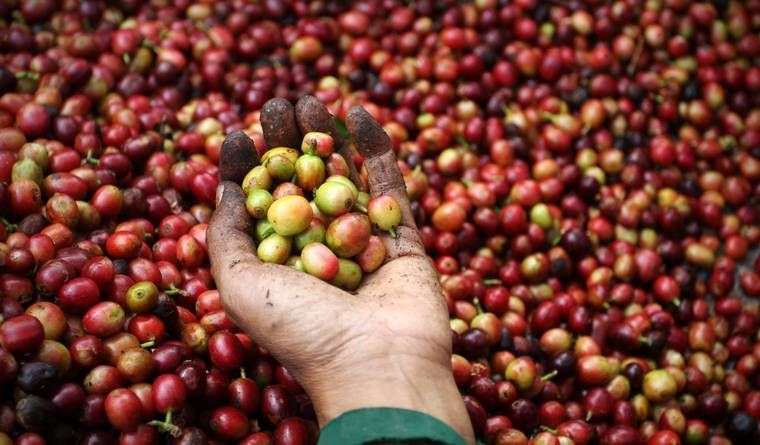
Coffee cultivation is a meticulous process that demands attention and care from the seed to the cup. The journey begins with the planting of coffee trees, which flourish in the equatorial belt, known for its rich soil and ideal climate conditions. However, the pivotal moment in this journey is the harvest.
The harvesting phase is crucial because it directly influences the quality, flavor, and aroma of the coffee. Only perfectly ripe cherries are picked, ensuring that the beans inside are at their peak for producing the best possible coffee.
Coffee Plant Varieties and Their Impact on Harvesting
The two primary coffee species, Arabica (Coffea arabica) and Robusta (Coffea canephora), have distinct characteristics that influence their harvesting times and methods. Arabica, celebrated for its complex flavors and aromatic profiles, requires a longer maturation period, allowing for a more nuanced flavor development.
Conversely, Robusta cherries mature more quickly, leading to a shorter harvest time. This rapid maturation contributes to Robusta’s bold and robust flavor profile.
The Coffee Harvesting Process
The harvest begins with the picking of coffee cherries, which can be done by hand or using mechanical harvesters. Hand-picking is labor-intensive but allows for selective harvesting, ensuring only ripe cherries are collected.
This method is essential for maintaining high-quality coffee. Mechanical harvesting, on the other hand, is more efficient but less discerning, potentially including underripe or overripe cherries in the harvest.
Processing Methods: Wet vs. Dry
After harvesting, the cherries undergo processing, which can be wet or dry. Wet processing involves removing the pulp and skin from the cherries before drying the beans, a method that enhances the coffee’s clean and bright characteristics.
Dry processing, alternatively, entails drying the whole cherries in the sun, which imbues the beans with a sweeter, more full-bodied flavor. The choice of processing method significantly affects the coffee’s final taste profile.
Drying Methods: Sun-Drying vs. Mechanical Dryers
The drying phase is critical for preventing spoilage and preparing the beans for roasting. Sun-drying, the traditional method, relies on natural sunlight and can take several days, contributing to the coffee’s nuanced flavors. Mechanical dryers, while faster, require careful control to ensure that the beans do not lose their complex flavor characteristics.
The drying method plays a vital role in defining the coffee’s final taste, making it an essential step in the coffee production process.
Optimal Conditions and Timing
The timing of the coffee harvest is influenced by a combination of climate, geography, and altitude. In regions closer to the equator, the warmer climate accelerates cherry maturation, often leading to earlier harvests.
Conversely, higher altitudes and their cooler temperatures delay ripening, extending the harvest period. Understanding these factors is crucial for farmers to predict the optimal harvest time, ensuring cherries are picked at their peak ripeness for the best quality coffee.
Significance of Tree Health
The health of coffee trees plays a pivotal role in the quality and yield of the harvest. Healthy trees, bolstered by proper nutrition and disease management, produce cheries with superior flavor profiles and higher yields.
Conversely, neglected trees may divert energy into survival rather than fruit production, leading to lower quality cherries. Regular monitoring and maintenance of tree health are indispensable for a bountiful and high-quality harvest.
Milling and Sorting
After drying, the coffee beans are milled, a process that removes the parchment layer from around the beans. This step must be handled with care to prevent damage to the beans, which could affect their quality and flavor. Following milling, the beans are sorted by size and weight, and defective beans are removed. This sorting ensures uniformity in the roast and optimizes the flavor profile of the final product.
Roasting: The Transformation to Flavorful Delights
Roasting is where the true flavor of coffee is unlocked. The process involves heating the beans to high temperatures, causing chemical reactions that develop the beans’ complex flavors and aromas. The roast level, ranging from light to dark, influences the coffee’s taste profile significantly.
Light roasts retain more of the bean’s original character, highlighting acidity and fruitiness, while dark roasts offer bolder, more robust flavors with notes of chocolate and caramel. The art of roasting lies in balancing time and temperature to achieve the desired flavor profile, transforming the humble coffee bean into a beverage cherished worldwide.
Sustainability in Coffee Harvesting
Sustainable practices in coffee harvesting are crucial for both environmental and economic stability. Employing methods such as shade-grown coffee, which preserves biodiversity and reduces the need for artificial fertilizers, contributes to the ecological health of coffee-growing areas.
Economically, sustainable practices ensure the long-term viability of coffee farms by improving soil health and water usage, leading to more consistent yields. These approaches not only protect the environment but also support the livelihoods of coffee communities, ensuring that coffee production can continue for generations.
The Role of Technology in Coffee Harvesting
Innovations in technology are transforming coffee harvesting, making it more efficient and improving bean quality. Advanced machinery for selective picking and sorting helps in harvesting cherries at their optimal ripeness, enhancing flavor profiles.
Precision agriculture tools, such as drones and satellite imagery, allow for better monitoring of crop health and soil moisture levels, enabling farmers to make informed decisions that boost yield and quality. These technological advancements are pivotal in meeting the growing global demand for coffee while maintaining high quality standards.
Harvest Seasons Around the World
Coffee harvesting seasons vary significantly across the globe, influenced by geography. In countries near the equator, like Colombia, coffee can be harvested year-round due to the constant climate.
Conversely, in regions with distinct wet and dry seasons, such as Ethiopia, harvests are more seasonal. This diversity in harvest timing requires producers to adapt their methods to local conditions, ensuring the best possible quality.
Cultural Techniques and Traditions
Distinctive harvesting practices reflect the rich cultural heritage of coffee-producing regions. In many areas, hand-picking cherries is not just a method but a tradition passed down through generations, embodying the care and dedication of local communities to coffee cultivation. These unique practices contribute to the diverse flavor profiles of coffee from different regions, enriching the global coffee culture.
Conclusion
Coffee harvesting combines art and science, where traditional techniques meet modern innovations. Each step, from preparing for harvest to roasting the beans, plays a crucial role in shaping the coffee’s final taste and quality.
Understanding the complexities of coffee harvesting not only enhances appreciation for the beverage but also highlights the importance of sustainable and innovative practices in ensuring the future of coffee production.









